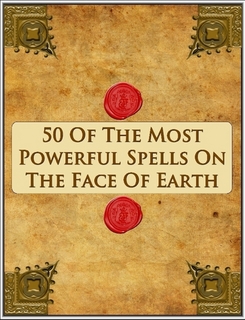Medieval Grimoires - The Most Holy Grimoire Or Grimorium Sanctissimum (116.0 Kb)
 Book downloads: 3941
Book downloads: 3941
This material may be interpreted as a method for securing the fluids of the sex-act for magical application. It is unwise to attempt this work without instruction and an effective body of light under control.Book can be downloaded.
Note that, unfortunately, not all my books can be downloaded due to the restrictions of copyright. However, most of the books on this site do not have copyright restrictions. If you find any copyright violation, please contact me at  . I am very attentive to the issue of copyright and try to avoid any violations, but on the other hand to help all fans of magic to get access to information.
. I am very attentive to the issue of copyright and try to avoid any violations, but on the other hand to help all fans of magic to get access to information.
If you are having difficulty downloading books, or you are looking for a book that is not on the site (but maybe it is in my home library), please write me a email to

and I will try to help, I can send the book by e-mail
darkbooks.org began in early 2008 I am happy to donate my time to providing you this resource, I would also like to note, that, although I try, I do not always have enough time to deal with the site, including, unfortunately, I do not always have time to answer all letters, because I have to earn money for a living. If you can financially help me, it would free me from the worries of earning money for living, perhaps partially, but ideally completely, then all 100% of my time could be devoted to the site. Also I do pay monthly web server/files storage and hosting costs to keep this site on the air. Please consider making a donation to help me continue this activity and devote more time to it or at least offset the cost of paying for storage/hosting. Even a small contribution helps!
This material may be interpreted as a method for securing the fluids of the sex-act for magical application. It is unwise to attempt this work without instruction and an effective body of light under control.
About Author:
Detailed books of magic rituals and spells, often invoking spirit entities. The term derives from grammarye or grammar, as magic was in times past intimately connected to the correct usage of language. Several of the more important grimoires were attributed the wise biblical king Solomon, while others were said to be the work of other ancient notables.
Grimoires began to appear during medieval times, when Western society was controlled by the Roman Catholic church, and the early grimoires reflect the conflict with Catholicism's supernaturalism. The grimoires called upon spirits generally thought to be evil by the church and were thus often branded as instruments of black magic. Some grimoires directly challenged church authority. One book of black magic was attributed to a pope. In the last century, a new form of ceremonial magic that operates outside the Christian sphere has arisen. Grimoires have thus taken on the trappings of an alternative religious worldview that assumes a neutral position with regard to Christianity.
Throughout the nineteenth and twentieth centuries, students of magic have tracked down many grimoires, some rare copies of which survived in the British Museum and the Bibliotheque de l'Arsenal in Paris, and made them available to the public. The Magus, published by Francis Barrett in London in 1801, stands as the fountainhead of these efforts. Barrett had access to a number of magic documents from which he took bits and pieces to construct a section of his book, which he titled The Cabala or The Secret Mysteries of Ceremonial Magic Illustrated. It includes not only instructions for working magic but also imaginative drawings of the various evil spirits he discusses. The Magus is important in being the first modern publication with sufficient instruction to actually attempt magic rituals.
The next major step in preserving grimoires came in the mid-nineteenth century with the writings of Eliphas Levi. His 1856 book, The Ritual of Transcendent Magic, enlarges upon Barrett's presentation and discusses several grimoires. In The History of Magic (1971) he includes a lengthy discussion of The Grimoire of Honorius (1629). Levi's books did much to create a revival of magic which then took embodiment in the Hermetic Order of the Golden Dawn, the first modern group to create a whole system of ritual magic. As a result of the order's activities, several of its members took important steps in publishing grimoires.



 Book downloads: 3941
Book downloads: 3941
 . I am very attentive to the issue of copyright and try to avoid any violations, but on the other hand to help all fans of magic to get access to information.
. I am very attentive to the issue of copyright and try to avoid any violations, but on the other hand to help all fans of magic to get access to information.
 and I will try to help, I can send the book by e-mail
and I will try to help, I can send the book by e-mail